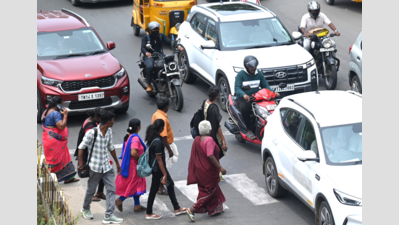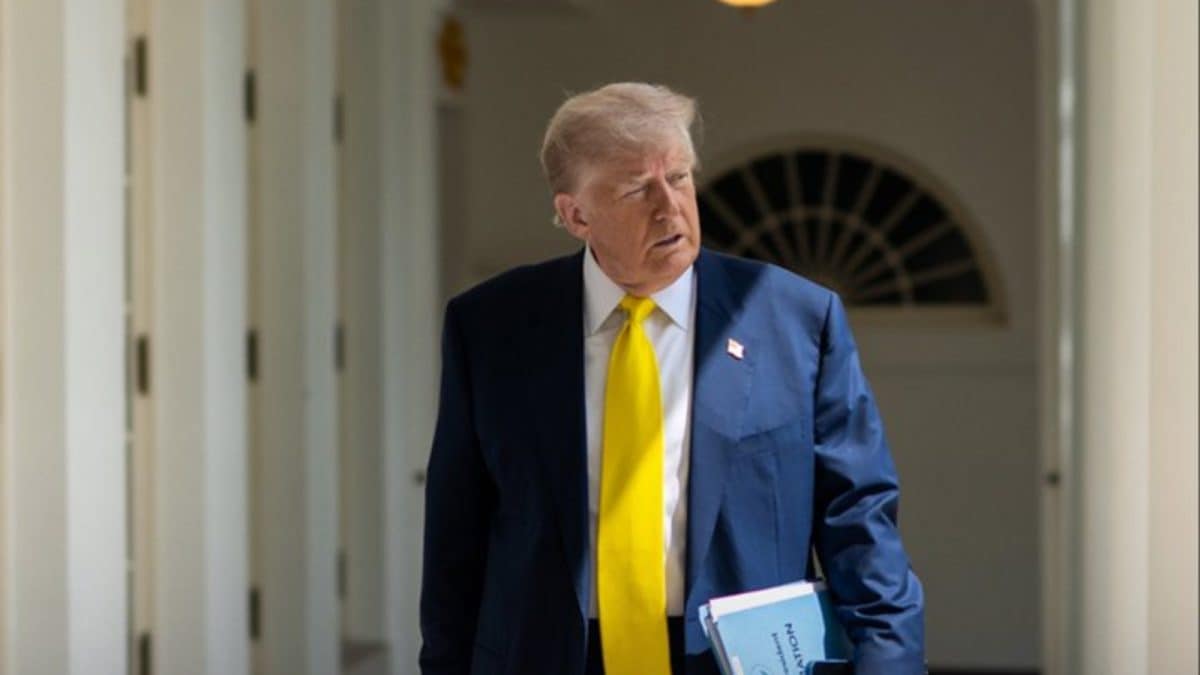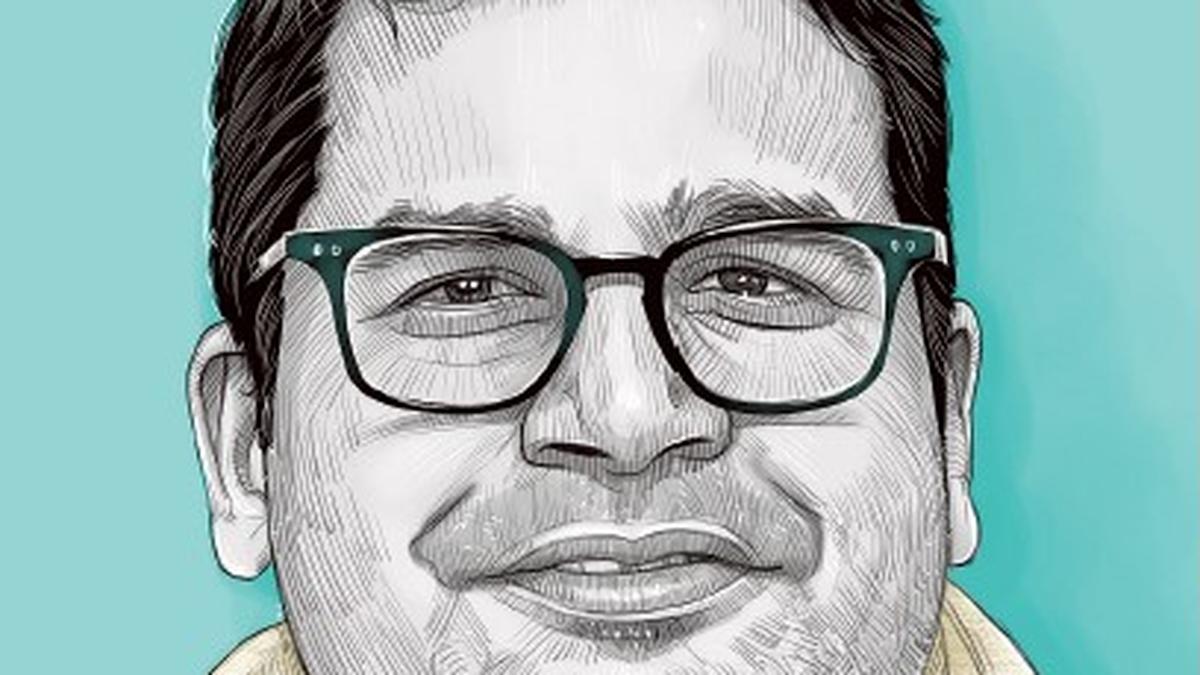ARTICLE AD BOX

The court held that the right to use footpaths is part of the fundamental right to life under Article 21 and must extend to persons with disabilities. It ordered that encroachments preventing this must be removed.
G AnanthakrishnanThe Supreme Court came to the rescue of pedestrians on Oct 7, asking state govts and Union Territories to come up with rules within six months facilitating access to public places and national highways, as well as rules for the design, construction and maintenance of roads other than national highways.
Although pedestrian trips constitute about half of all urban commutes, with the figure rising to 63% in a survey of select cities done six years ago, govts devote almost their entire road budget to create new facilities for vehicle users. New flyovers are announced frequently.Casualties among walkers in road traffic crashes are undercounted in official data. The Union ministry of road transport and highways gave the figure for fatalities in cities and highways as 13%, 15% and 17% during 2017-2019, but IIT-Delhi’s Transport Research and Injury Prevention Centre reported independent studies putting it at a minimum of 30%.The court held that the right to use footpaths is part of the fundamental right to life under Article 21 and must extend to persons with disabilities. It ordered that encroachments preventing this must be removed. Yet, in Chennai and other big cities, footpaths have become contested territory, with official agencies generating friction between walkers and hawkers, with no serious attempt at reconciling the use of the commons by both sides.
Vehicles are allowed to usurp pedestrian space.In 2023, 1,72,890 people died and nearly 4.7 lakh were injured in road crashes across states and Union territories. This intractable crisis, which SC has been trying to resolve for years through periodic orders in the landmark Dr S Rajasekaran vs Union of India case, has now been addressed with some degree of finality. The litigation by the Coimbatore orthopaedic surgeon prompted the court to give detailed instructions from time to time on what govts must do in a time-bound manner.
In May, SC ordered the Union govts to constitute the National Road Safety Board within six months.Chennai, Coimbatore, Trichy and Madurai are covered in the court’s latest orders. Tamil Nadu is now required to “identify the deficiencies in the existing footpaths, including the width, height, surface … decide the remedial measures, including repair and road engineering improvement, and fix a timeline for addressing the deficiencies”.
All existing pedestrian crossings must be audited to see if they comply with Indian Roads Congress (IRC) standards.Road owning agencies must include “traffic calming measures” as well as signage to indicate the existence of pedestrian crossings with high-visibility zebra marking, illumination of pedestrian crossing during night-time, road dividers, CCTV surveillance linked to command centres and clearly demarcated entry and exit points and panic buttons connected to local police stations as well as raised pedestrian crossings, and trained crossing guards at school zones and vulnerable corridors.
Pedestrian infrastructure at public transport sites must be inspected to see if they meet IRC standards.Chennai should have implemented these measures long ago, given that Greater Chennai Corporation adopted a non-motorised transport policy a decade ago. Yet, the city lacks basic walkability, even if OMR, Royapettah, Kodambakkam, T Nagar, Mylapore, Nungambakkam, Purasawalkam and other areas where Chennai metro rail phase 2 work is on, are excluded.The SC orders give pedestrians a new opportunity to determine whether road owning agencies such as civic bodies and state highways have audited the worst sites in their localities, something that can be confirmed using the Right to Information Act. Use of RTI for specific local information may be necessary even if govts, NHAI and municipal authorities create an online grievance redress mechanism.Just ahead of the court issuing final directions, GCC said it would upgrade pedestrian facilities along 23 stretches of road as part of a plan for 200km; the initial budget for 18km is `28.8cr.
In parallel, the conflict over footpath space has begun anew, as street vendors elected 90 members to the civic body’s town vending committees to select areas where hawkers could vend for a livelihood.Vending and walking go together, but Chennai and other Indian cities have a zero sum approach, where vendors and walkers are in severe conflict because of a third factor: vehicles occupying footpath space. According to GCC, vending does not permit permanent structures to be erected on or abutting footpaths that obstruct pedestrian movement, but such rules remain unenforced.
In many core areas, footpaths formed earlier and marked “pavements are for walking” host obstructions, including roadside hotels.
There is no initiative to identify new commons for vending.SC and other courts have been sympathetic to the cause of hawking, although officials who enabled a culture of petty bribes extracted from vendors and politicians dispensing vending patronage, prevented a consensus that would make the right to use footpaths as well as the right to vending meaningful.This needs proper design, standardisation and transparent licensing. Forty years ago, in Olga Tellis vs Bombay Municipal Corporation, SC wanted squatters to be given alternative sites, but ruled that “no person has the right to encroach, by erecting a structure or otherwise, on footpaths, pavements or any other place reserved or earmarked for a public purpose like, for example, a garden or a playground”.Chennai’s GCC area has 387km of bus route roads and 5,270km of interior roads, making it imperative for the civic body to provide usable pavements and pedestrian crossings of prescribed standards.The Tambaram and Avadi Corporations, and civic bodies in Coimbatore, Madurai and Trichy as million-plus cities, and several suburban municipalities are covered by the judicial orders.Rather than view the orders as far reaching, civic bodies must make an earnest effort to map problem spots to provide solutions. For instance, pedestrian crossings can be made safer through creation of raised speed tables, including designs made of recycled rubber.
Effective rumble strips will cut vehicular speeds at intersections. All inner city junctions should have the Barnes Dance traffic signals, which turn red in all directions to help pedestrians simultaneously cross the roads, including diagonally.Chennai’s two previous plans did not focus on the problems of walkers and cyclists. Even now, the discussions around the third master plan are centred mainly on concerns around vehicles, neglecting walking.
When the metro system and expansion of last mile connectivity is done, a new paradigm on walkability must be in place.Union transport ministry data for 2023 says TN recorded 14% of road accidents in the country, the highest, although Uttar Pradesh overtook TN on fatalities, pushing it to second place: 13.7% against 10.6%. The SC’s series of orders on road safety provide an opportunity to reduce the penchant for lawless use of motor vehicles, and emphasise the rights of people. As Justice J B Pardiwala on the SC bench observed, everything now depends on how the guidelines are implemented. (The writer is a Chennai-based journalist)Email your feedback with name and address to southpole.toi@timesofindia.com

 2 hours ago
4
2 hours ago
4









 English (US) ·
English (US) ·